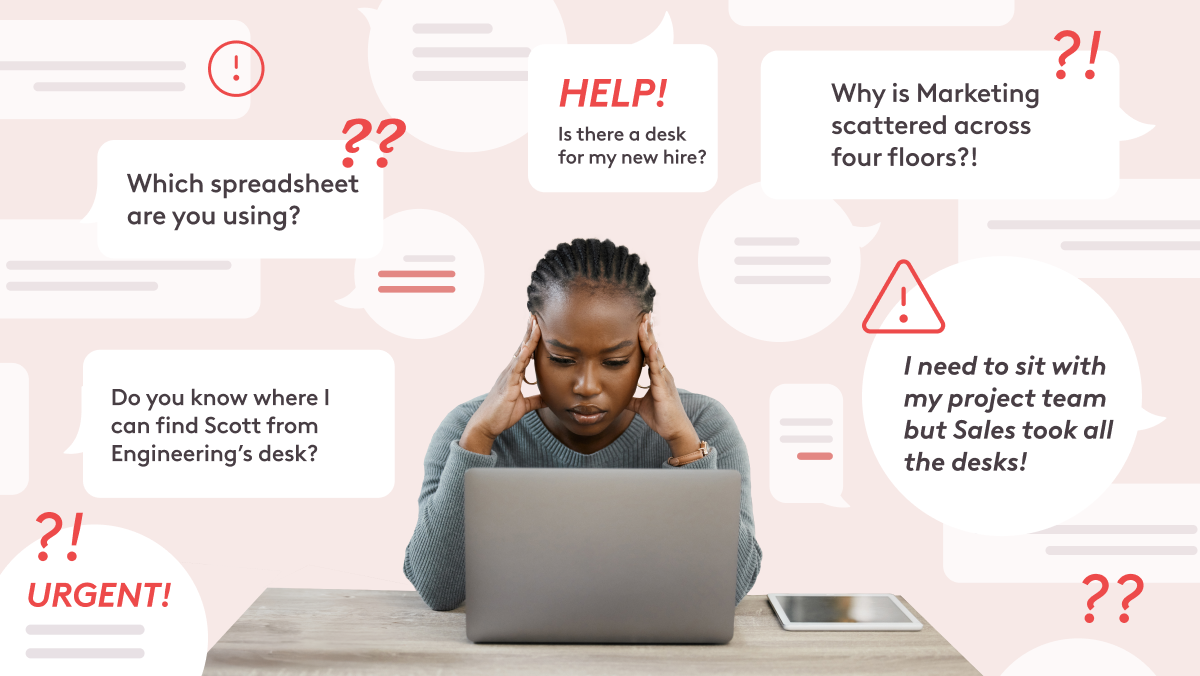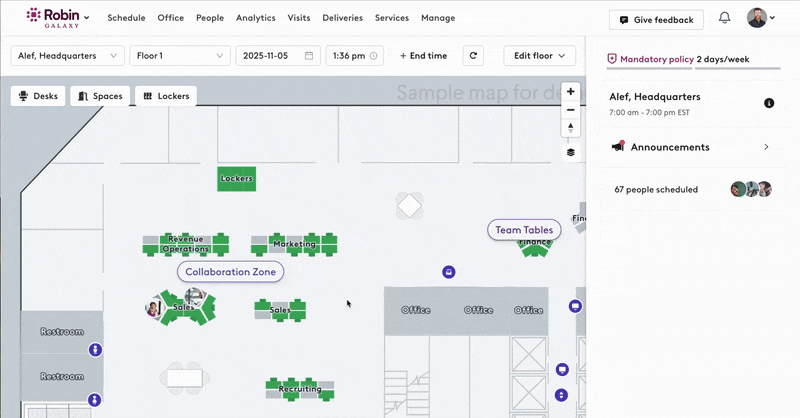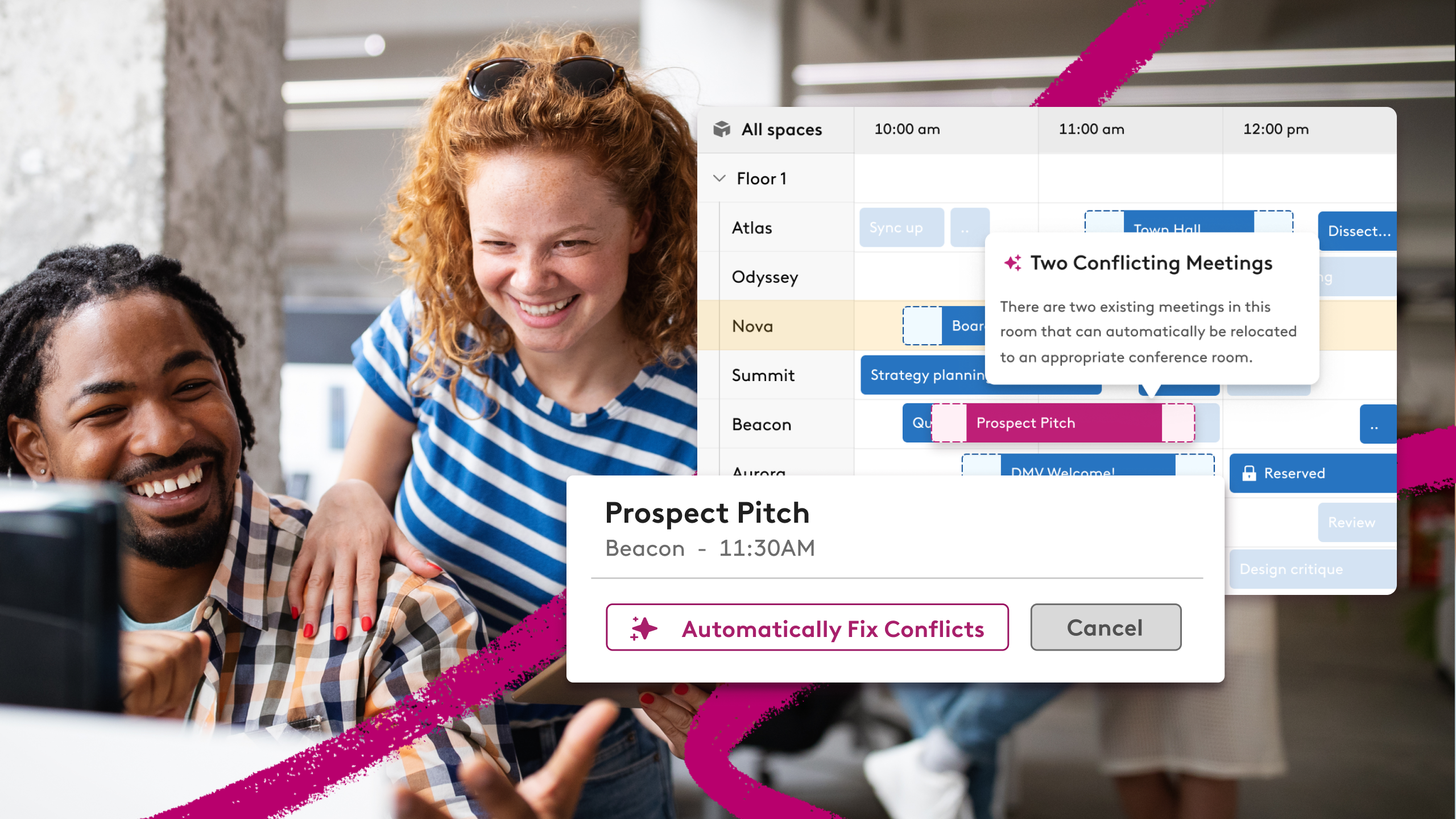How to Organize Hybrid Office Seating that Actually Works

Another in-office anchor day, another flood of Slack messages: "Why is Marketing scattered across four floors?" "Do you know where I can find someone from engineering?" "Why even bother coming in when I can’t find who and what I need?"
Sound familiar?
You’re not alone. Across hybrid offices everywhere, admins are juggling spreadsheets, while employees just hope their office day doesn’t feel like a waste.
It’s no wonder your return-to-office strategy isn’t sticking.
The office admin's impossible task

Leadership wants "collaboration and culture" from office days, but your current system makes that nearly impossible to deliver.
Here's what you’re are actually managing:
- Desk assignments that look like someone threw darts at a floor plan
- Teams split across floors (or buildings) with no rhyme or reason
- Constant fire-drills when someone needs to sit near their project team
- Zero visibility into whether your layout decisions actually work
- Spreadsheet chaos every time you need to make changes
Why "just figure it out" doesn't work
Most office management systems were built for 2019. They assume fixed schedules, fixed desks, and that people work the same way every day.
Now workplace pros are trying to orchestrate dynamic seating for teams that are in the office 2-3 days a week, often on different schedules. You need to:
- Visualize how teams cluster (or don't)
- Test different arrangements without disrupting everyone
- Make changes without starting from scratch
Your current setup gives you exactly none of this. It’s guesswork, at best.
Meet Neighborhoods: the admin superpower you've been waiting for
Robin's Neighborhoods feature transforms your floor plan from a collection of free-for-all desks into organized zones where teams naturally cluster. Think of it as giving your office a logical structure that everyone can actually see and use.
Finally, visual planning that makes sense
Instead of juggling spreadsheets, you have a color-coded map that shows exactly how your office is organized. Each neighborhood gets its own color and label, so you can see at a glance whether teams are actually sitting together and collaborating, or if they’re scattered to the winds.
Creating neighborhoods in Robin is simple, see how it’s done in this quick video:
Scenario planning (finally)
This is a real game-changer. You can draft multiple floor plan scenarios without disrupting anyone's actual workday.
How it works:
- Test different team arrangements
- See how many desks Engineering really needs
- Try clustering Sales near the conference rooms
- Share edit-only versions with managers to collaborate on assignments for their teams
- Share read-only versions with leadership to get buy-in before making changes
When you find a layout that works, publish it live. When it doesn't, scrap it and try again. No more crossing your fingers and hoping.
Resource management that actually helps

Neighborhoods give you instant visibility into desk allocation. You can see how many desks are assigned to each team, how many are occupied and available, and whether you have enough space in the right areas.
It’s how you stop team leads from discovering (too late) that their “section” only fits half their team.
What your employees actually see

Your beautifully organized neighborhoods aren't just for admin eyes. When employees open Robin to book their desk, they see:
- Clear color-coded labels showing where their team sits
- Hover effects that highlight all desks in their neighborhood
- One-click zooming to their team area
- Easy booking within their designated space
No more hunting. No more accidentally booking a desk three floors away from their teammates.
The bottom line
If your hybrid office feels like a free-for-all, it’s because it is. But it doesn’t have to stay that way. Neighborhoods give you a smarter, clearer way to organize the chaos, without killing flexibility.
So teams collaborate more. Employees stop asking where everyone is. And your office starts working again.












